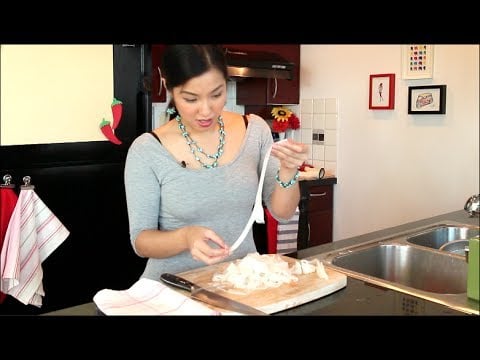Fresh Rice Noodles (ho fun)
Your folders
Your folders
Prep Time: 5 minutes
Cook Time: 20 minutes
Servings: 2
Author : Pailin Chongchitnant

Ingredients
Export 3 ingredients for grocery delivery
Instructions
Step 1
In a mixing bowl, add the rice flour and the tapioca starch and whisk to combine.
Step 2
Add a little water at a time and mix just until it can form into a dough, then knead it for about 5 minutes, or longer if you feel up to it, then add the remaining water to dissolve the dough into a batter.Note: The noodles will work without kneading, but the kneading forces the starch to absorb more water faster and become more fully hydrated, which results in shinier, softer, and chewier texture. Alternatively, you can skip the kneading and just add all the water, then rest the batter, allowing the starch to hydrate with time. You'd rest the batter ideally for 1 day, or at least 1 hour, but the longer the better.
Step 3
Preheat the steamer and bring the water to a boil. Brush your pan with oil and then use paper towel to remove any excess. Pour in an amount of batter that would yield noodles that are about 1/16 inch or 1.5 mm; you will need to do some testing given the size of your pan.
Step 4
Place the pan into the steamer, and jiggle it so that the batter covers the entire pan if needed. Steam for about 2 minutes or until fully cooked.
Step 5
Remove the pan from the steamer, then brush a generous amount of oil on top. Once it's cool enough to handle, peel the noodles from the pan and place it on a plate. Repeat with the remaining batter, placing subsequent sheets on top of the first one. If there is a thick side (can happen if your stove isn't completely flat), make sure you put the thick side of the sheets on the same side so we can trim them.
Step 6
Once you have all the noodles, trim off a side that is too thick if necessary (see video for example). Then cut into strips. For Pad see ew or pad kee mao, I prefer noodles that are about ¾ inch thick. For noodle soups, I prefer ½-inch.